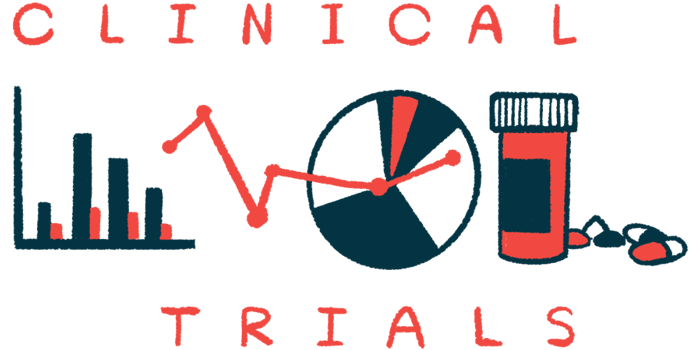UX111 offers cognitive, motor skill gains in Sanfilippo syndrome type A
Ultragenyx Pharmaceutical is seeking accelerated approval of gene therapy

Ultragenyx Pharmaceutical’s experimental gene therapy UX111 slows or halts the brain damage that affects communication and cognitive and motor skills in children with Sanfilippo syndrome type A, according to new trial data.
While younger children receiving the one-time therapy saw gains in these functional domains compared with untreated age-matched children, older-treated patients or those whose disease was more advanced maintained meaningful skills.
“When we compare the impact of UX111 to natural history in children 2 to 5 years of age, we see that as you correct the underlying enzymatic deficiency at a molecular level, you provide the ability to preserve neurons and for these children to gain new developmental skills,” Eric Crombez, MD, chief medical officer of Ultragenyx, said in a company press release. “For older patients with severe disease, we know from caregivers and clinicians that stabilizing the disease, so that a child can retain or even slow down the loss of key skills like walking independently, communicating and self-feeding, would have a profound impact on their quality of life.”
The latest findings from the Phase 1/2/3 Transpher A clinical trial (NCT02716246) and long-term studies, with a follow-up duration of up to six years, are being presented this week at the WORLDSymposium 2025 21st Annual Research Meeting in San Diego.
What is UX111?
Ultragenyx, which acquired the rights to UX111 (previously ABO-102) in 2022, included the results in its December application to the U.S. Food and Drug Administration (FDA) for UX111’s accelerated approval for Sanfilippo type A. Accelerated, or conditional, approval is based on early clinical trial signs suggesting a therapy’s efficacy. Full approval is dependent on additional trial data that confirms its safety and efficacy.
The FDA hasn’t yet said whether it will review it, but if it does, Ultragenyx said UX111 could become available commercially later this year.
Sanfilippo type A is caused by mutations in the SGSH gene, which provides instructions to make heparan N-sulfatase, an enzyme needed to break down the heparan sulfate (HS) sugar molecule. In Sanfilippo A, the lack of this enzyme causes heparan sulfate to build up in brain cells, which kills them and drives the disease’s progression.
UX111 is a one-time gene therapy designed to deliver a healthy copy of the SGSH gene to brain cells, thereby allowing a working enzyme to be produced that can clear toxic heparan sulfate buildup and help slow or halt disease progression.
Reductions in heparan sulfate
More than 30 children with Sanfilippo A have been treated with UX111 as part of Transpher A and the Phase 1/2 ABT-003 trial (NCT04088734). Both studies assessed changes in heparan sulfate levels in the cerebrospinal fluid (CSF), which surrounds the brain and spinal cord.
Available data from 27 children given the highest tested dose showed reductions in CSF heparan sulfate within about a month of dosing, and these declines were consistently seen irrespective of the patients’ age or disease stage at the time of treatment.
As of August 2024, the median reduction in CSF heparan sulfate was 66% in Transpher A’s modified-intent-to-treat group, which included 17 children younger than 2 or who had a developmental quotient (DQ) of 60 or higher when they received the highest dose. DQ is a measure of development compared with normative values for typically developing children, similar to an intelligence quotient, or IQ.
At that time, most of the children had been followed for about three years and up to six years.
In this group, a standard measure called the Bayley Scales of Infant Development-III is being used to track outcomes related to cognition, communication, and motor function, all areas that normally deteriorate as Sanfilippo A progresses. Newly announced findings compared changes in Bayley-III scores over time in the UX111-treated children with those reported in a natural history group of untreated patients of the same age range.
Cognitive, communication, motor skill gains
In measures of cognition, average scores improved by 16 points after UX111 treatment, while scores worsened by nearly 7 points among untreated children over a similar time.
Scores related to communication abilities and fine motor skills also showed statistically significant improvements over natural history data, according to Ultragenyx.
Measures of motor function, which tends to deteriorate later in Sanfilippo A, have shown trends towards improvement with UX111 as well, though the differences haven’t been statistically significant from natural history data.
“Longer-term follow-up is needed to establish significant separation from the natural history data in untreated patients,” the press release stated.
Also, CSF heparan sulfate levels were significantly associated with estimated yearly rates of score change for all five Bayley-III subdomains after UX111 treatment.
New analyses also showed the 10 children who were older or had more advanced disease at the time of treatment showed signs of their disease stabilizing.
At the last assessment, the children’s ages ranged between 5 and 15, and all retained communication skills they had before being treated. Three were communicating verbally and seven were communicating nonverbally. All but one were still able to walk and/or feed themselves.
“These findings are clinically significant as these functions significantly worsen and are eventually lost in late childhood and early adolescence,” the release stated, which also indicated the therapy was generally safe and well tolerated.







